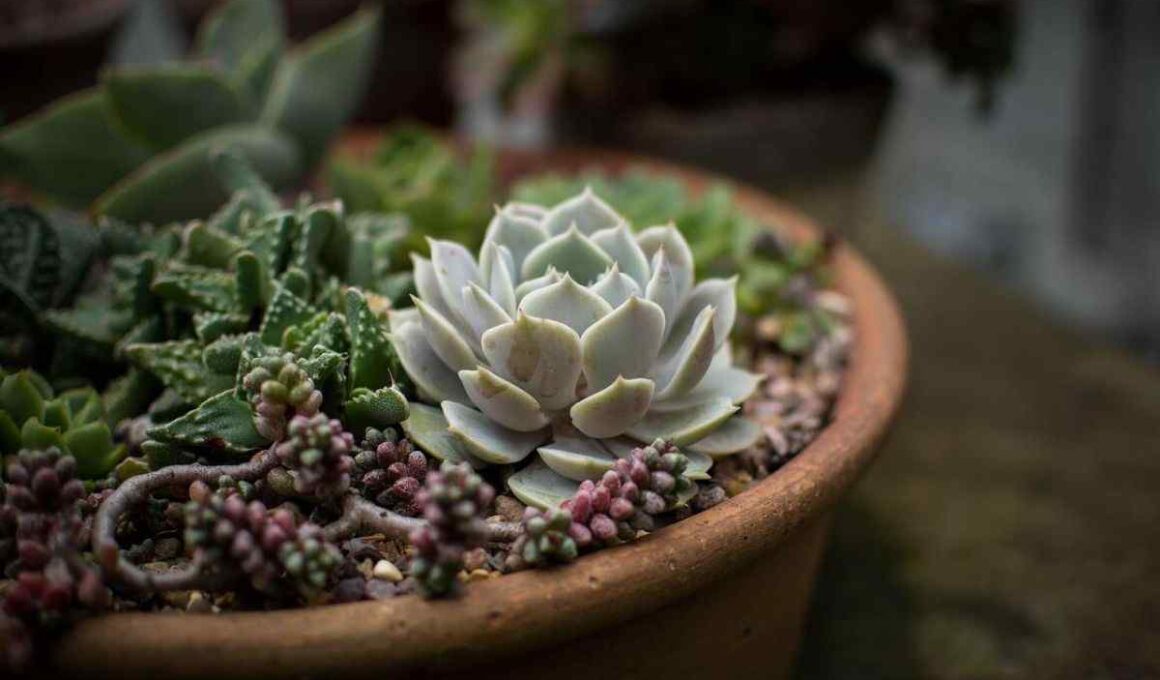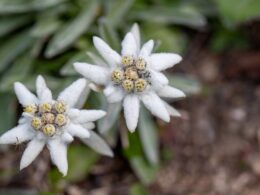What Are Succulents? Species and Characteristics
Before we get into how to grow succulents, let’s learn a bit about them. Succulents are plants that have thick, fleshy stems and leaves that are adapted to store water. Their name comes from the Latin word succus, meaning juice or sap. The most popular types of succulent include:
- aloe vera;
- agave;
- cactus;
- echeveria;
- jade plant;
- snake plant.
In the United States, succulents are usually grown indoors as houseplants. However, they can also be grown outdoors in gardens in warm, dry climates. USDA hardiness zones 9 through 11 are typically ideal for outdoor succulent gardens.
Succulents come in a wide range of colors, including green, red, purple, pink, and yellow. They can be found with leaves that are smooth or prickly, and their shapes vary from tall and thin to short and round. No matter what kind of succulent you choose, they’re all relatively easy to care for.
How to Grow Succulents Indoors – The Basics
If you want to know how to grow succulents indoors, there are a few basic rules. First, succulents need a pot that has drainage holes. Otherwise, the plant will become waterlogged and die. Second, succulents need a light, well-draining potting mix. A cactus or succulent potting mix can be found at most garden centers.
To water your indoor succulents, wait until the soil is completely dry. Then, water the plant thoroughly, making sure that the water drains out of the bottom of the pot. Allow the plant to dry out completely before watering again. Too much water causes root rot, which is one of the most common problems people have with growing succulents.
Additional Tips for Keeping Your Indoor Succulents Looking Great
In addition to the basic care instructions above, there are a few other things you can do to keep your succulents looking their best.
- Make sure that your succulents are getting enough light. If they’re not, they may start to stretch out and become leggy.
- If your succulents start to look a little bit sad, try giving them a little bit of fertilizer. A slow-release fertilizer or a liquid fertilizer diluted to half strength can be applied every few months.
- Pests are not typically a problem for succulents, but if you do notice any pests, try to remove them by hand.
- If you want to prune your succulents, do so in the spring. This will encourage new growth.
How to Grow Succulents Outside
Now, let’s move on to the question: how to grow succulents in your garden? If you live in a warm, dry climate, you can do it year-round. Start by preparing the bed where you’ll be planting the succulents. Make sure that it gets full sun and has well-drained soil. If necessary, amend the soil with sand or gravel to improve drainage.
To plant the succulents, dig a hole that’s twice as wide as the pot the plant is currently in. Gently remove the plant from its pot and place it in the hole. Backfill the hole with soil and water well.
Caring for Succulents in Your Garden
Only water your outdoor succulents when the soil is bone-dry. During the hottest months of summer, you may need to water more frequently. The exact watering needs will depend on the species of succulent, so make sure to read the care instructions that came with your plant.
In the winter, outdoor succulents may go dormant. This means that they’ll stop growing and may even lose their leaves. This is normal and nothing to worry about. Just make sure to stop watering the plants during this time. If you live in an area that gets cold winters, you can grow succulents in containers that can be brought indoors when the temperature starts to drop.
Propagating Succulents From Cuttings or Offsets
One of the best things about succulents is that they’re very easy to propagate. This means that you can take a small piece of a plant and grow an entirely new plant from it. The most common way to propagate succulents is by taking a cutting from an existing plant. Leaf propagation works well for succulents with fleshy leaves growing in rosettes – all you need to do is detach the whole leaf. For succulents with distinct stems, you’ll need to cut a bit of the stem.
To take a stem cutting, use a sharp knife or a pair of scissors to cut a piece of the plant that includes both leaves and stem. Allow the cutting to callus over for a few days before planting it in well-drained soil. Water the cutting sparingly, wait for it to root, and then care for it as you would for a normal succulent plant.
How to grow succulents by division? This is especially easy to do with plants that produce offsets, or baby plants. To divide an offset from the parent plant, gently pull it away from the main plant. Once it’s separated, you can pot it up.
How Often Should You Repot Succulents?
Most succulents don’t need to be repotted very often. In general, you should only repot a plant when it’s outgrown its current pot. If the roots are coming out of the drainage holes or if the plant is toppling over, it’s time for a new pot.
If you’re not sure how often to repot your succulents, err on the side of caution and don’t repot them too often. It’s better to have a plant that’s a little bit rootbound than to repot it too frequently and stress the plant out.
Plant Succulents in Pots and Enjoy the Easy Care
Now you know how to grow succulents. They’re low-maintenance plants that add interest to any space. With a little bit of knowledge, you can successfully grow these trendy plants. Just remember to give them plenty of light, well-drained soil, and infrequent watering, and you’ll be well on your way to becoming a succulent expert.



















